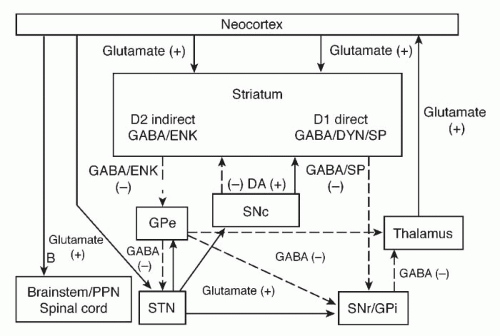Medical and Nursing |
Firm bed to decrease contractures and improve bed mobility |
Gradual changing of positions, elastic stockings, abdominal binder, sodium tablets, and possibly pseudoephedrine, midodrine, and/or fludrocortisone for orthostasis |
Regular meals with proper diet (low protein); nutritional consultation |
Measure vital capacity and enforce incentive spirometry to prevent atelectasis and pneumonia |
Bowel program for gastrointestinal hypomobility (stool softeners, bulk-forming agents, cisapride, and suppositories may be required) |
Bladder evaluation and urodynamics; anticholinergics (e.g., oxybutynin chloride [Ditropan]) for hyperreflexic bladder |
Artificial tears for lack of blinking |
Sexual dysfunction evaluation |
Anticholinergic medications before mealtime to help facilitate oral and pharyngeal movements |
Physical Therapy |
Relaxation techniques to decrease rigidity |
Slow rhythmic rotational movements |
Gentle range-of-motion and stretching exercises to prevent contractures, quadriceps and hip extensor isometric exercises |
Neck and trunk rotation exercises |
Back extension exercises and pelvic tilt |
Proper sitting and postural control (static and dynamic); emphasize whole body movements |
Breathing exercises stressing both the inspiratory and expiratory phase |
Functional mobility training, including bed mobility, transfer training, and learning to rise out of a chair by rocking; may require a chair lift |
Stationary bicycle to help train reciprocal movements |
Training in rhythmic pattern to music or with auditory cues such as clapping may help in alternating movements. Standing or balancing in parallel bars (static and dynamic) with weight shifting, ball throwing |
Slowly progressive ambulation training (large steps using blocks to have patients lift legs, teaching proper heel-to-toe gait patterns, feet 12-15 in. apart, arm swing; use inverted walking stick, colored squares, or stripes as visual aids) |
Use of assistive devices (may need a weighted walker) |
Aerobic conditioning (swimming, walking, cycling) |
Frequent rest periods |
Family training and home exercise program |
Occupational Therapy |
Range-of-motion activities of upper extremity with stretching |
Fine motor coordination and training, hand dexterity training using colored pegs or beads |
Hand cycling to help train reciprocal movements |
Rocking chair to help with mobilization |
Transfer training |
Safety skills |
Adaptive equipment evaluation, including Velcro closures, raised toilet, grab bars, eating utensils with built-up handles, and key holders |
Family training and home exercise program |
Speech |
Deep breathing and diaphragmatic breathing exercises |
Articulatory speech training for dysarthria |
Facial, oral, and lingual muscle exercises |
Swallowing evaluation, including a modified barium swallow as needed |
Teaching compensatory strategies for safer swallowing |
Psychology |
Psychological support for patient, family, and caregivers |
Cognitive assessment |
Adapted from Jain SS, Francisco GE. Parkinson’s disease and other movement disorders. In: DeLisa JA, ed. Rehabilitation Medicine: Principles and Practice. 3rd ed. Philadelphia, PA: Lippincott Williams & Wilkins; 1988:1035-1056. |









